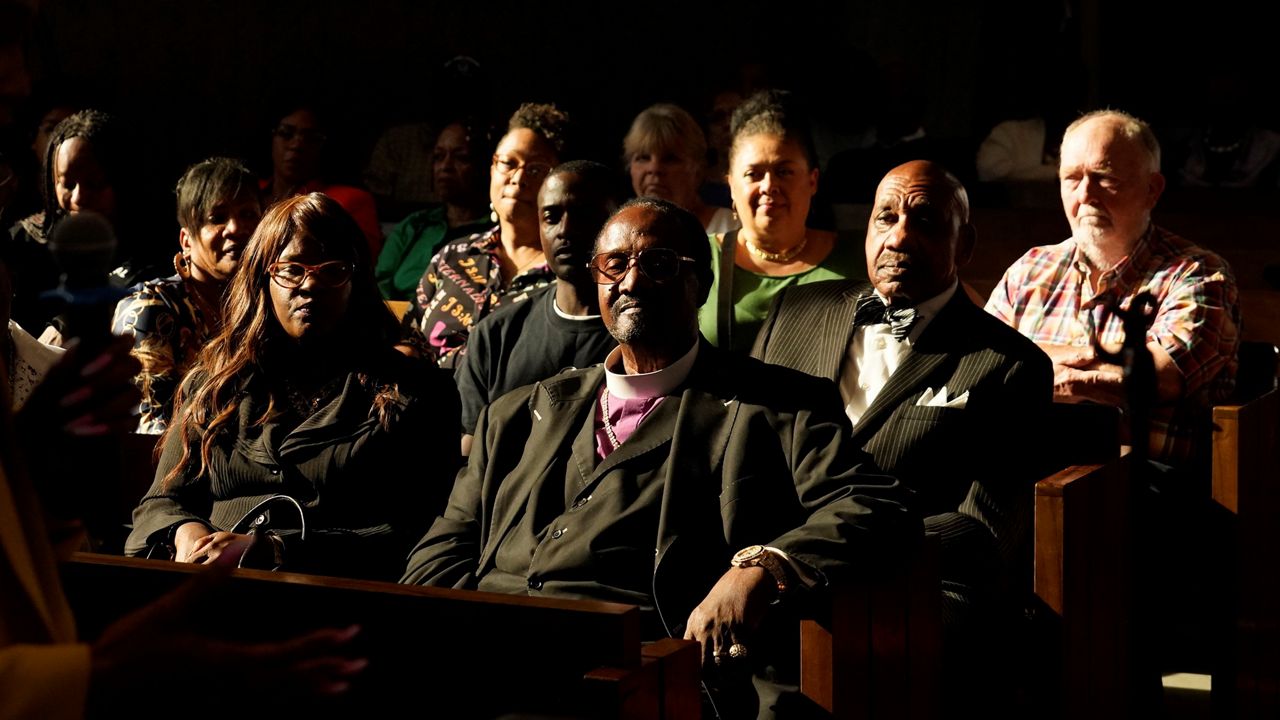PALM SPRINGS, Calif. (AP) — As a child, Lawrance W. McFarland lived on a small piece of land on a Native American reservation in Palm Springs he described as a “little world of its own,” surrounded by the parts of the city that were tourist magnets and depicted in movies.
The retiree, who now lives in Mississippi, recently recalled seeing houses of the diverse, tight-knit community being torn and burned down in the square-mile area known as Section 14.
“We thought they were just cleaning up some of the old houses,” he said.
But eventually his family was told to vacate their home, and McFarland, his mother and his younger brother hopped around from house to house before leaving the area altogether and moving to Cabazon, a small town about 15 miles west of Palm Springs.
Decades later, Palm Springs’ city council is reckoning with those actions, voting in 2021 to issue a formal apology to former residents for the city’s role in displacing them in the 1960s from the neighborhood that many Black and Mexican American families called home. But the former residents say that is not enough.
Those former residents now say the city owes them more than $2.3 billion for the harm caused by their displacement. That would be nearly $1.2 million per family. The dollar amount was disclosed Sunday at a meeting attended by experts such as Cheryl Grills, a member of the state’s reparations task force studying redress proposals for African Americans.
The effort in Palm Springs is part of a growing push by Black families to seek compensation and other forms of restitution from local and state governments for harms they’ve suffered due to generations of discriminatory policies that continued long after slavery ended.
California’s statewide reparations task force is evaluating how the state can atone for policies like eminent domain that allowed governments to seize property from Black homeowners and redlining that restricted what neighborhoods Black families could live in. Last year, Los Angeles County officials voted to complete the return of land in Manhattan Beach to a Black family descended from property owners who had it seized by the city through eminent domain in the 1920s. The family decided to sell the property back to the county for $20 million.
Palm Springs officials expect to work with a “reparations consultant” to decide whether and how to compensate the families displaced from the area, said Amy Blaisdell, a spokesperson for the city, in an email. The council may take this up for a vote later this month. The city, located about 110 miles east of Los Angeles, is home to about 45,000 people today and is largely known as a desert resort community, home to golf courses and ritzy resorts.
The families are also exploring legal avenues for reparations. Areva Martin, a Los Angeles lawyer representing them, filed a tort claim with the city in November alleging officials hired contractors to bulldoze homes and sent the fire department to burn them. City officials said in response that they would work with former residents and their descendants to try to come up with a solution, Martin said.
“There’s no evidence of the tremendous contributions they made to the city,” she said.
Julianne Malveaux, an economist and dean of the College of Ethnic Studies at California State University, Los Angeles, said the $2.3 billion figure accounts for the displacement of 2,000 families and the trauma caused to them.
Lisa Middleton, a city council member and former Palm Springs mayor, said it was important to acknowledge the city’s role in displacing Section 14 residents.
“Our history includes some wonderful moments for which we have every right to be proud,” she said at a meeting. “But it also includes some moments for which we have every reason to be remorseful, to learn from those mistakes and to make sure that we do not pass those mistakes onto another generation.”
But the story of displacement at Section 14 is more complicated than some people may realize, said Renee Brown, associate curator and archivist for the Palm Springs Historical Society.
Section 14 is a part of the Agua Caliente Band of Cahuilla Indians reservation. The tribe wanted to open up Section 14 to lease to developers, and the city helped it clear the land over the course of more than a decade, Brown said.
“The city could never have gone on that land and done anything,” she said, without “tribal permission.”
The tribe did not respond to requests for comment.
The tort claim argues the tragedy was akin to the violence that decimated a vibrant community known as Black Wall Street more than a century ago in Tulsa, Oklahoma, leaving as many as 300 people dead. There were no reported deaths in connection with the displacement of families from Section 14.
Three survivors of the Tulsa massacre are seeking compensation through a lawsuit filed against the city. U.S. lawmakers introduced legislation in 2021 to try to make it easier for survivors and descendants to seek reparations, but the bill never received a hearing.
Palmdale resident Pearl Devers lived in Section 14 with her family until she was 12 years old. She helped spearhead efforts in recent years to create a group to reflect on their time living there and determine next steps.
Her father, a carpenter, helped build their home and many others in Section 14, she said. She recalled how close residents in the neighborhood were, saying her neighbors acted as a “second set of parents” for her and her brother.
She recalled smelling and seeing burning homes until one day her mother said their family had to pack their bags and leave.
“We just felt like we were running from being burned out,” she said.
Alvin Taylor, Devers’ brother, said it’s essential for city officials to listen to displaced residents and descendants before deciding on a course of action for how to best make amends.
“An apology is not enough,” Taylor said.



